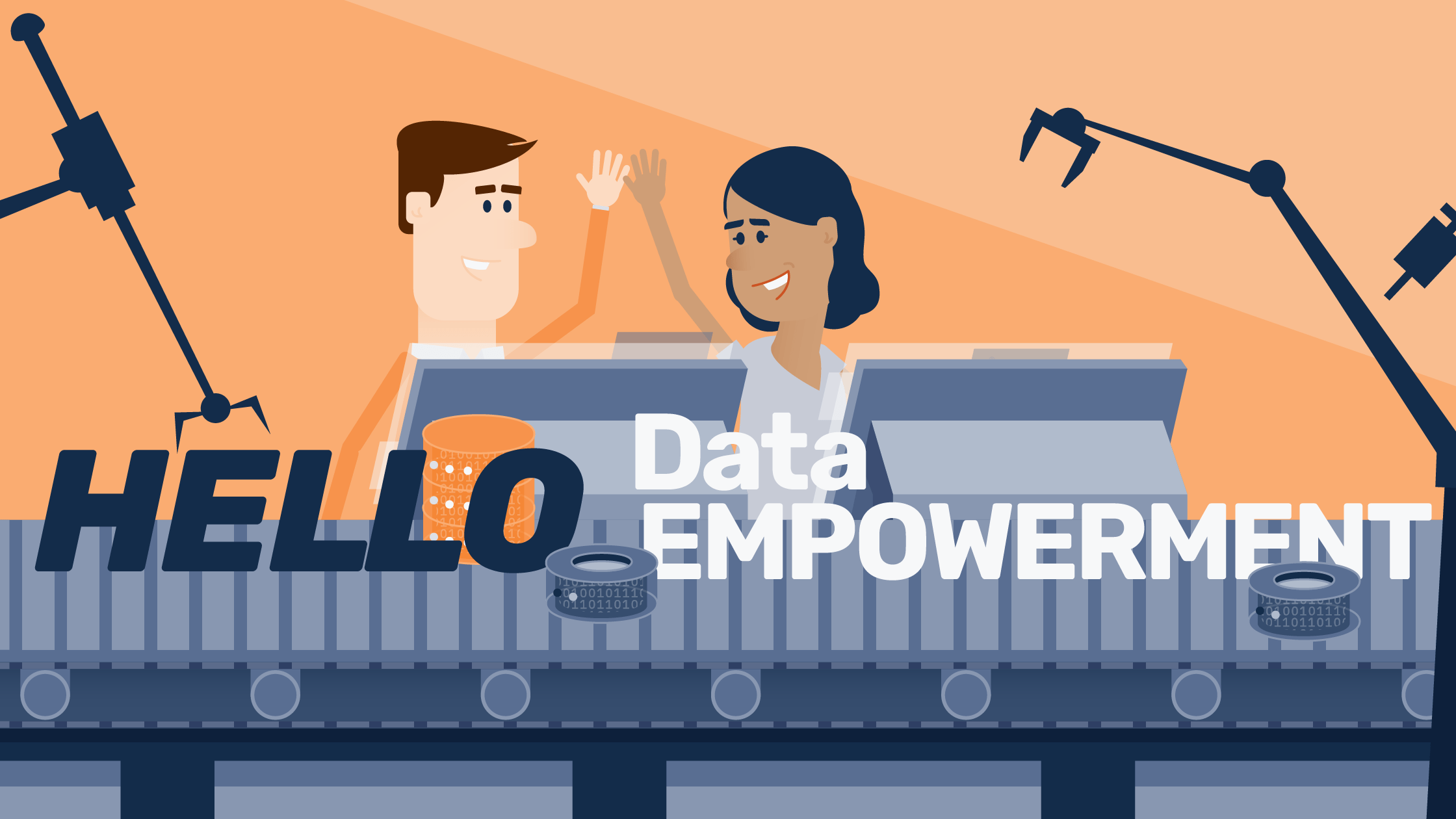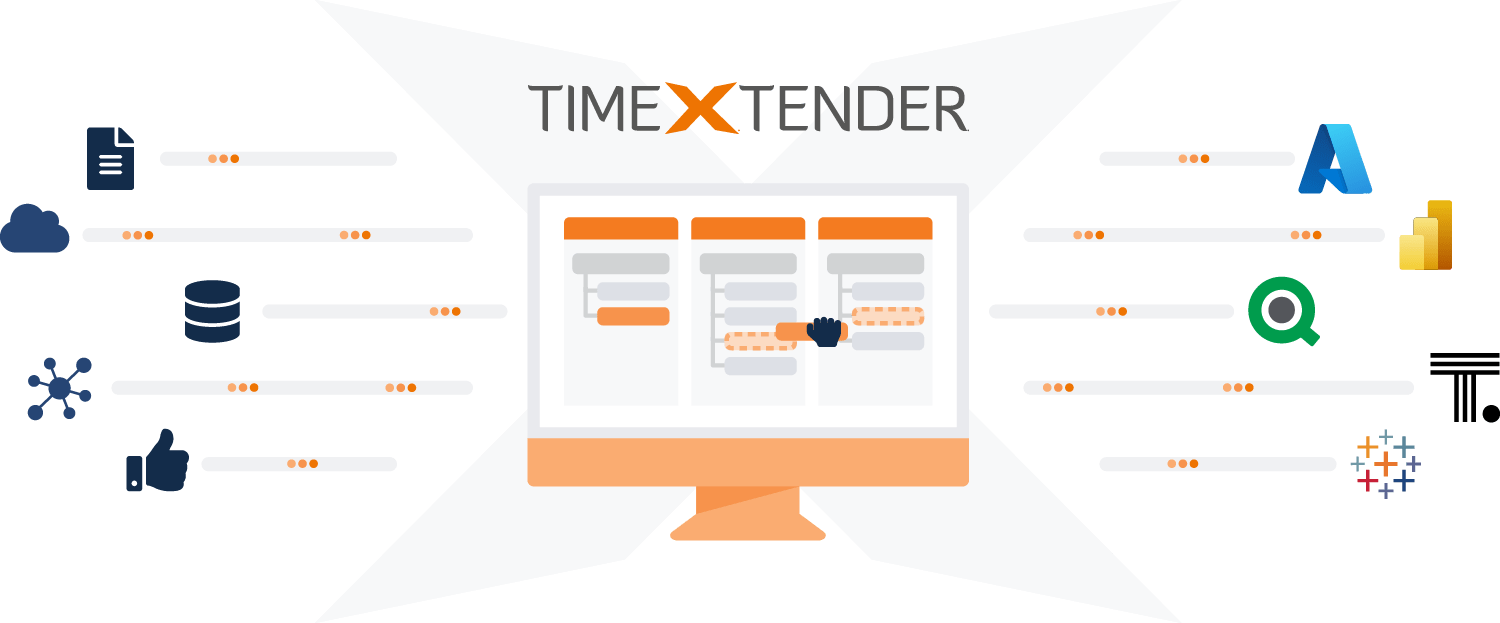5 min read
Top 5 Ways to Win in the Machine Economy for Transportation and Logistics Companies
Written by: Micah Horner, Product Marketing Manager, TimeXtender - May 18, 2022

Industrial revolutions are driven by the introduction of new technologies that allow for increased production and efficiency. The first industrial revolution was powered by steam and water, the second by electricity, and the third by digital technology.
Now we're in the midst of a fourth industrial revolution, driven by data, artificial intelligence, autonomous machines, interconnectivity, and smart automation.
In this new "Machine Economy", organizations will increasingly use these smart technologies to automate tasks, streamline operations, make better decisions, deliver superior customer experiences, and quickly gain market share over traditional players.
To understand the enormity of this shift, here are 3 statistics you need to be aware of:
/Blog/GDP%20growth-min.png?width=326&name=GDP%20growth-min.png) AI, machine learning, and smart automation will drive 70% of GDP growth over the next decade.
AI, machine learning, and smart automation will drive 70% of GDP growth over the next decade.- By 2030, AI will contribute an estimated $15.7 trillion to the global economy, more than the current output of China and India combined.
- 62% of business leaders are putting plans in place to succeed in a world filled with smart automation and connected machines – 16% are already investing and performing strongly.
It’s now clear that decision-making AI and machines will be the primary driver of economic growth over the next decade.
As the Machine Economy matures, transportation and logistics firms will have many exciting opportunities to outpace their competitors by leveraging these new technologies.
the top 5 ways transportation and logistics companies can leverage these new technologies to win in the Machine Economy
1. Automate Routine Tasks with AI and Autonomous Machines
One way transportation and logistics companies can win in the Machine Economy is by automating routine tasks. Not only will this improve efficiency and accuracy, but it will also free up employees to focus on more valuable tasks.
Here are a few specific examples:
- AI-powered applications can be used to automate repetitive tasks like data entry and filing.
- AI can also be used to automatically generate documentation, such as bills of lading, invoices, and customs declarations.
- Robots can be used to load and unload trucks, sort packages, and move inventory around warehouses.
- Self-driving vehicles can be used for local transportation, last-mile delivery, and other potential applications.
2. Use Data and AI to Improve Decision-Making
/Landing%20Pages/AI%2c%20ML-min.png?width=178&name=AI%2c%20ML-min.png) Data is the lifeblood of the transportation and logistics industry. In the past, transportation and logistics companies have used data to track shipments, optimize routes, and forecast demand.
Data is the lifeblood of the transportation and logistics industry. In the past, transportation and logistics companies have used data to track shipments, optimize routes, and forecast demand.
Now, with the help of artificial intelligence and machine learning, data can be used to do so much more.
Here are a few specific examples:
- Historical data can be used to forecast future demand and optimize pricing.
- Data can be used to identify inefficiencies in the supply chain and develop strategies to address them.
- Machine learning can be used to predict traffic patterns and optimize transportation routes in real-time.
- Machine learning can also be used to predict maintenance needs, identify fraud, and waste, and automate financial reporting.
- Sales intelligence can be used to target new customers, cross-sell and upsell to existing customers, and improve customer retention rates.
3. Streamline Operations with IoT and Blockchain
Another way transportation and logistics companies can win in the Machine Economy is by streamlining operations with the help of IoT devices and blockchain technology.
By connecting devices and tracking data on a blockchain ledger, transportation and logistics companies can gain visibility into their supply chains, optimize asset utilization, and reduce costs.
Here are a few specific examples:
- Blockchain can be used to create a single view of the supply chain, from raw materials to final delivery.
- Blockchain can be used to create a digital record of ownership for assets, eliminating the need for paper-based documentation.
- Blockchain can also be used to create a digital record of contracts, eliminating the need for physical signatures.
- IoT devices can be used to track the location of assets in real-time and automatically update the blockchain ledger.
- IoT devices can also be used to monitor the condition of assets and track maintenance needs.
- IoT devices can also be used to monitor the condition of inventory, such as temperature-sensitive goods, and take action if they are not within the desired range.
4. Deliver Superior Customer Experiences
In the transportation and logistics industry, customer experience is everything. In the past, transportation and logistics companies have used traditional methods, such as phone calls and paper-based documentation, to communicate with customers.
/Blog/chatbot-min.png?width=250&name=chatbot-min.png) Now, transportation and logistics companies can use digital technologies, such as chatbots and online portals, to deliver superior customer experiences.
Now, transportation and logistics companies can use digital technologies, such as chatbots and online portals, to deliver superior customer experiences.
Here are a few specific examples:
- Data from IoT sensors can be used to create new customer experiences, such as providing real-time tracking of shipments and automatic notifications when a delivery is made.
- Machine learning can be used to make recommendations about products or services that may be of interest to the customer, based on their purchase history.
- A chatbot can be used to answer customer questions 24/7 and provide real-time updates on the status of their shipments.
- Virtual reality and augmented reality can be used to provide customers with immersive experiences, such as virtual tours of warehouses or factories.
5. Become Future-Proof
The future of transportation and logistics is being shaped by the Machine Economy. In order to win in the future, transportation and logistics companies need to invest in the technologies that will enable them to succeed.
Perhaps the most important technology investment is also the most overlooked: a low-code, agile, integrated tool that will allow you to quickly consolidate and prepare your data for analysis, AI, and machine learning.
Every day, transportation and logistics companies generate billions of data points from IoT sensors, machines, customer interactions, financial transactions, and more.
This data is useless unless it can be effectively collected, cleaned up, and analyzed.
Unfortunately, data scientists still report spending around 45% of their time just on data preparation tasks. Data preparation is an extremely tedious and time-consuming and costly process that often involves:
- Data discovery to identify data sources
- Data profiling to determine data attributes and data quality
- Data ingestion into data warehouses or data lakes using complex ETL processes
- Data cleansing to deal with data errors such as missing data, wrong data, or illogical data
- Data enrichment to fill in missing information such as location or date
- Data transformation to convert data from one format to another
What you need is a smart, fast, and flexible tool that will help you quickly build the data and analytics foundation you need to make data-driven decisions, improve operational efficiency, and deliver superior customer experiences.
Your Options: Stack, Platform, or Builder
Approach #1: The Stack
Traditionally, the data preparation process has relied on a highly-complex stack of tools, a growing list of data sources and systems, and months spent hand-coding each piece together to form fragile data “pipelines”.
Approach #2: The Platform
Then came data management “platforms” that promised to reduce complexity by combining everything into a single, unified, end-to-end solution. In reality, these platforms impose strict controls and lock you into a proprietary ecosystem that won’t allow you to truly own, store, or move your own data.
It’s clear that these old approaches to data management simply cannot meet the needs of data teams in the Machine Economy.
Fortunately, there is a third approach.
Approach #3: The Builder
In order to overcome the data management challenges listed above, data professionals need a solution that meets all 3 of these criteria:
- Low-Code: It must be smart enough to build your entire data estate for you by automatically generating all the underlying code and documentation, from end to end.
- Agile: It must provide both technical and business users with a simple, drag-and-drop user interface for quickly ingesting, preparing, and delivering corporate data for analytics and AI/machine learning.
- Integrated: It must seamlessly overlay your data storage infrastructure, with no vendor lock-in, while integrating all the data ingestion, preparation, quality, security, and governance capabilities you need into a simple, unified, metadata-driven solution.
Meet TimeXtender, the Low-Code Data Estate Builder
/GIFs/Detailed-Animation.gif?width=1400&name=Detailed-Animation.gif)
TimeXtender empowers you to build a modern data estate 10x faster by eliminating manual coding and complex tool stacks.
With our low-code data estate builder, you can quickly integrate your siloed data into a data lake, model your data warehouse, and define data marts for multiple BI tools & endpoints – all within a simple, drag-and-drop user interface.
TimeXtender seamlessly overlays your data storage infrastructure, connects to any data source, and integrates all the powerful data preparation capabilities you need into a single, unified solution.
Because all code and documentation are generated automatically, you can reduce build costs by 70%, free data teams from manual, repetitive tasks, and empower BI and analytics experts to easily create their own data products – no more bottlenecks.
We do this for one simple reason: because time matters.
Learn How to Become Data Empowered with TimeXtender
Watch a demo to learn how we can help you build a modern data estate 10x faster, become data empowered, and win in the Machine Economy.





/Blog/Comparison%20No-BG%20No-side-text.png?width=700&name=Comparison%20No-BG%20No-side-text.png)